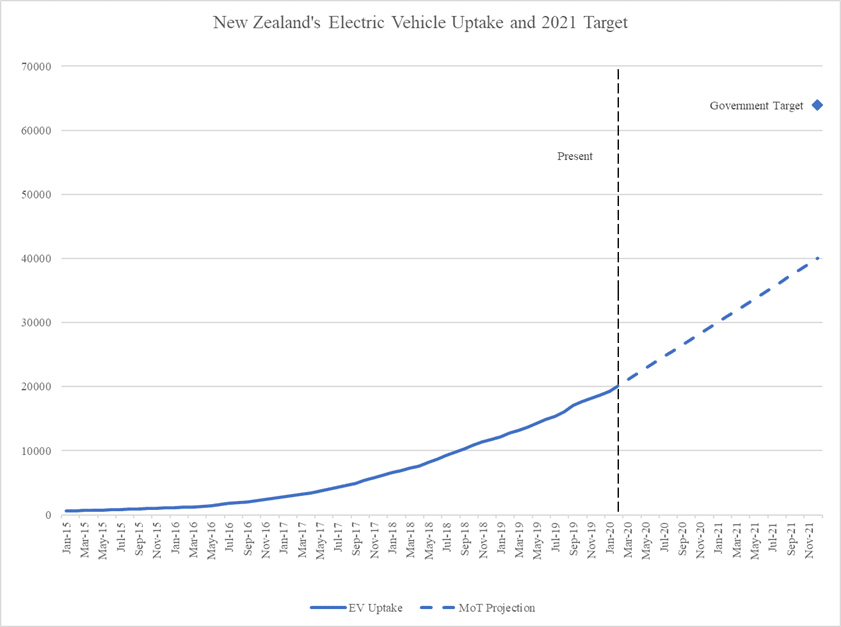New Zealand will fail to meet a National-era target to have 64,000 electric vehicles on the road by the end of 2021, according to the Ministry of Transport.
There are currently more than 19,000 electric vehicles in the country and that number is expected to double over the next 22 months, but we will still fall far short of the target.
The news comes after Stuff reported on Friday that the Government’s controversial feebate scheme, which would have subsidised electric vehicles by placing fees on high-emitting cars, will not come into effect.
Since the feebate scheme would only have started in 2021, its demise has had little impact on the failure to reach the target.
The target was set according to “base case” projections, meaning it was thought in 2016 that New Zealand would reach 64,000 EVs by the end of 2021 without any policy intervention.

“This shows that the previous National government was never going to reach its own target, in part, because they didn’t put in place effective policies to make buying an EV more affordable,” Associate Transport Minister Julie Anne Genter told Newsroom.
National transport spokesman Chris Bishop hit back, claiming Genter had “absolutely no credibility on EVs whatsoever”.
“Their policies are literally exactly the same as the ones introduced by the National Party. She’s had two and a bit years as Associate Minister of Transport talking a big game on electric vehicles and has failed to enact any policy change.”
Bishop declined to say whether the target would have been hit had National remained in Government after 2017.
“I certainly think we’d be a lot closer. One of the things we were very keen on doing was transitioning the Government vehicle fleet to electric vehicles and again, that’s another thing that the minister has been singularly inneffectual at doing.”
Newsroom reported in October that the Government had abandoned an earlier pledge, written into the Labour-New Zealand First coalition agreement, to make the Crown fleet emissions-free by mid-2025.
There are currently just 82 electric vehicles in the 15,000-strong government fleet.
“The anecdotal feedback I’ve had from the market is that a lot of people have been delaying buying an EV in the hope that the feebate scheme would start at some point in the future.”
Bishop also blamed the feebate scheme for missing National’s old target for wider EV uptake.
“All that’s happened with [Genter’s] misguided feebate scheme is it’s actually stymied the uptake of electric vehicles because the anecdotal feedback I’ve had from the market is that a lot of people have been delaying buying an EV in the hope that the feebate scheme would start at some point in the future,” he told Newsroom.
Genter defended the scheme and the accompanying emissions standard, which is still extant.
“Cars and trucks are the fastest growing source of climate pollution in New Zealand, so we need to electrify our vehicles to ensure a safe planet for our kids and grandkids,” she said.
“To increase uptake we need to make electric cars cheaper for kiwi families, which is why we need policies like the Clean Car Discount and Standard.”
The Ministry of Transport expects to see around 40,000 EVs on the road by the end of 2021, more than 20,000 short of the 2016 target.



